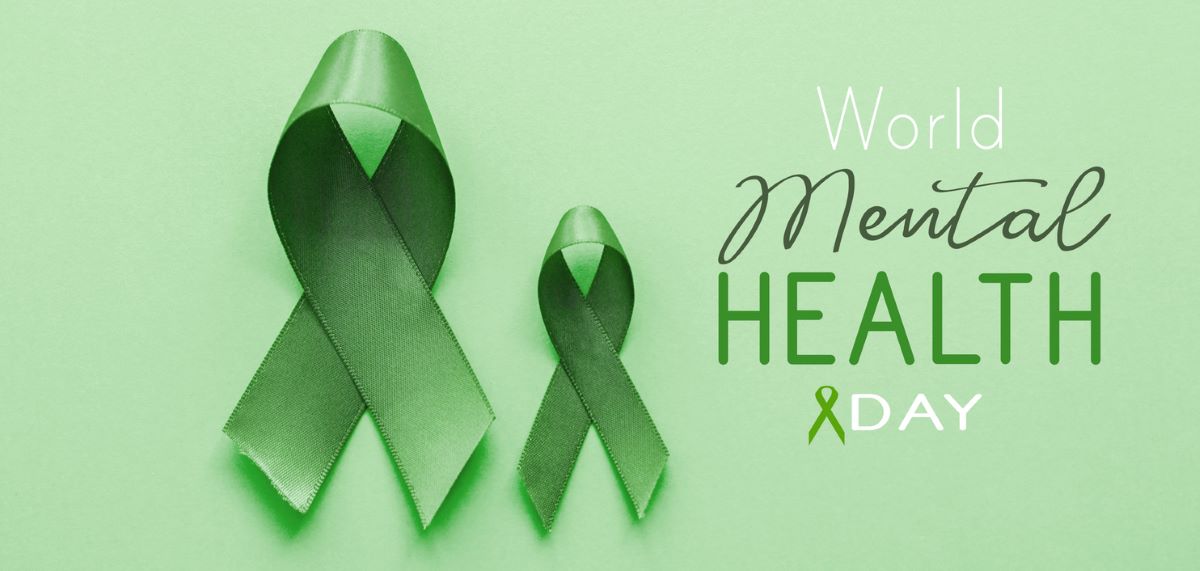5 ways to make an impact beyond World Mental Health Day
World Mental Health Day is an opportunity to boost awareness for your well-being efforts. Here’s how communicators can get the word out—beyond sloganeering and one-off sound bites.

Mental health is trending thanks to Sunday’s designation as World Mental Health Day.
The World Health Organization’s #WorldMentalHealthDay campaign has helped boost awareness, but the truth is that interest in mental health is more than a blip. The topic has surged since the pandemic began and even hit a Google Trends rating of 87 with over 1.5 million online mentions this same week last year, according to Talkwalker.
“The day really helps open up the conversation about mental health, just like Mental Health Month did in May and Suicide Awareness Month in September,” says Aparna Samuel Balasundaramm, who heads global well-being and resilience at WIPRO Limited.
“But we can’t stop there,” she says. “Employee well-being efforts can’t be one-offs. They have to be sustainable and wide-reaching, because we’ve all suffered some mental toll due to the pandemic.”
Here’s how you can step in and steer your organization’s mental health offerings:
1. Learn to spot red flags.
“It’s important for communicators to be aware of mental health red flags and to share them with other departments,” says Balasundaramm. For example:
- Changes in work habits: “Watch for unplanned absenteeism or a drop in engagement,” she says. “That can be as simple as a person turning their camera off instead of on compared to previous meetings.”
- Changes in mood or thought: “Erratic behavior like sudden interruptions or angry outbursts in meetings can be signs of simmering issues,” she says.
While mood swings and outbursts are usually more obvious, changes in emotional states and thought processes can be more subtle.
For example, a team member may be sadder or more anxious in meetings. Or their emails and other digital communications might be less focused.
“These indicators don’t signify bigger problems on their own,” Balasundaramm says. “But it’s a different story when they’re new and they increase over time.”
- Physical and physiological changes: “Appearance is also a good indicator,” she says. “Does the person look fatigued or distracted? Is their background suddenly messy and unkempt? Do they talk about a change in eating or sleep habits?”
She adds that there’s been a huge uptick in alcohol consumption during the pandemic.
“For remote workers, it could more easily get beyond social drinking and impact performance,” Balasundaramm says. “And it doesn’t have to be alcohol. It could also be cannabis, CBD or anything else that’s fine on its own—until it’s overused.”
2. Educate staff and well-being ambassadors.
Only 51% of workplaces provide information about mental health and offer resources to help, according to a recent report by The Public Relations and Communication Association (PRCA).
“That number is dispiriting,” says Balasundaramm. “At minimum, your organization should offer employee assistance for mental health or some form of mental health benefits—and you should be posting it on your intranet and email newsletters.”
Here are some more resources you can share to educate your team and staff:
- World Health Organization: “Mental Health Action Plan”
- World Mental Health Day: FAQs and social media tiles
- Institute for Public Relations: “Resources for PR Professionals”
“Another idea is to create a ‘Wellbeing Ambassadors Group,’” adds Jaya Koilpillai Bohlmann, president of Designing Communication, which provides well-being training.
“It’s basically an employee resource group (ERG) of hand-selected staff with influence who care about the topic,” she explains. “They’d get mental health training to watch for [red flags], meet once a month and be tasked with regular check-ins with remote employees. They’d report into HR and have access to tools and resources to help employees who are struggling.”
3. Assess and elevate your organizational EQ.
“Research shows that the higher an organization’s emotional quotient (EQ), the higher its levels of positive mental health among employees,” says Bohlmann, who is a licensed corporate coach and has written for PRSA on the topic.
So how is organizational EQ relevant to communicators?
“Two key components of EQ are social awareness and relationship management,” Bohlmann explains. “Those competencies are communications-based. For example, PR pros are responsible for advising leadership on how the organization is being perceived—and communicators are often tasked with internal and external client relations.”
While true organizational EQ assessments are more involved, here are three sample questions you could pose to evaluate EQ for organizations:
QUESTION: During a heated conflict with my team or client, I am/my organization is more likely to:
- Call for a short break before resuming the discussion.
- Give in and apologize to quickly end the argument.
- Start insulting the other person.
- Shut down and stop responding to the other person.
QUESTION: When making an important decision, I/my organization usually:
- Follow my instincts.
- Go with the easiest option.
- Rely on direction from other people.
- Guess randomly.
QUESTION: Which of the following statements best describes you/your organization?
- I/we have an easy time gaining recognition and expanding our network and client base.
- I/we have to really spend a lot of time with people/other companies before they become a trusting ally, partner or customer.
- I/we find it difficult to meet potential clients and win their trust.
- I/we am/are unable to maintain trusting relationships.
According to Bohlmann, A answers indicate higher levels of EQ and B through D answers indicate decreasing levels.
4. Build awareness with the VAC approach.
A wellness program is useless if nobody’s aware of what’s available to them. Balasundaramm suggests this three-pronged approach for spreading the word:
Visibility. “Emails can get lost in all of the communications we get,” she says. “One way to differentiate your messages so they stand out is to create a specific ‘mascot for wellness.’”
“Change the look and feel of your wellness-themed emails,” she explains. “It could be as simple as changing the font or color. A green banner might indicate ‘health.’”
Balasundaramm adds that consistency is key.
“One email around World Mental Health Day isn’t enough,” she says. “Repetition works, so consider launching a monthly well-being newsletter. Be sure to feature employee voices and stories—and add them to editorial board so they take emotional ownership of this.”
Accessibility. Awareness isn’t enough to drive change, Balasundaramm says. “You also need to make mental health resources and solutions readily available to employees.”
She advises posting self-paced e-learning tools on your intranet. “That way, employees can sign in whenever they want. It needs to be a safe place that’s not being pushed at them.”
She also recommends offering a “nutshell series.” These are quick, experiential activities like a 15-minute Yoga or mindfulness session designed to promote well-being.
“And don’t overlook hobbies as well-being activities,” she adds. “They’re even more effective when they’re available to the whole family. For example, a photography lesson for taking better selfies is a great way to get children, a partner or even a pet involved.”
Credibility. “Nothing sinks wellness programs faster than a sense that you’re going through the motions,” says Balasundaramm.
Her advice: “Start by securing buy-in from your executives,” she says. “They need to share posts and videos sending a message that it’s safe to talk about well-being. That way, you’re creating a culture of psychological safety.”
Credibility also comes from frontline managers. “They’re connected to frontline staff, so give them behavior-spotting training and empower them to help if they see issues.”
The secret to success is positive peer pressure, according to Balasundaramm.
“Employees are more trusting and enthusiastic when they see coworkers engaging,” she explains. “It builds trust and word-of-mouth awareness for your program.”
Once you capture that enthusiasm, share it.
“For example, we got feedback after a mental health session that 98 percent of participating employees loved it,” she says. “So we created an infographic about why they loved it and sent it out internally with a link back to the [mental health page].”
5. Share your story beyond the Sunday holiday.
“Don’t sit on your well-being story,” says Balasundaramm. “Let others know mental health is important to you beyond World Mental Health Day.”
Her advice: “Consider holding a virtual summit for employees on mental health with guest speakers,” she says. “Invite the press, members of the community and even potential hires.”
She also suggests making leadership and subject matter experts available to speak to the press on mental health when news breaks like the Simon Biles story did during the Summer Olympics.
“We’re all human,” says Balasundaramm. “These moments are opportunities to showcase that.”
Bohlmann issues a caveat: “Share, but don’t oversell,” she says. “If you’re not where you want to be with mental health, don’t get ahead of yourself. Tell it like it is and post simple things on social media like your paid mental health days or well-being ambassador groups hard at work.”
Brian Pittman is the Dean of Ragan Training a Ragan Communications event producer. For more information about Ragan Training, contact him at brianp@ragan.com.






